1. Klein JO. Amoxicillin/clavulanate for infections in infants and children: past, present and future. Pediatr Infect Dis J. 2003; 22:S139–48.
2. Gillies M, Ranakusuma A, Hoffmann T, Thorning S, McGuire T, Glasziou P, Del Mar C. Common harms from amoxicillin: a systematic review and meta-analysis of randomized placebo-controlled trials for any indication. CMAJ. 2015; 187:E21–31.
3. Pechère JC. Patients’ interviews and misuse of antibiotics. Clin Infect Dis. 2001; 33:Suppl 3. S170–3.
4. Arias CA, Murray BE. A new antibiotic and the evolution of resistance. N Engl J Med. 2015; 372:1168–1170.
5. Dore MP, Piana A, Carta M, Atzei A, Are BM, Mura I, Massarelli G, Maida A, Sepulveda AR, Graham DY, et al. Amoxycillin resistance is one reason for failure of amoxycillin-omeprazole treatment of Helicobacter pylori infection. Aliment Pharmacol Ther. 1998; 12:635–639.
6. Lee JW, Kim N, Kim JM, Nam RH, Chang H, Kim JY, Shin CM, Park YS, Lee DH, Jung HC. Prevalence of primary and secondary antimicrobial resistance of Helicobacter pylori in Korea from 2003 through 2012. Helicobacter. 2013; 18:206–214.
7. Nishizawa T, Suzuki H, Tsugawa H, Muraoka H, Matsuzaki J, Hirata K, Ikeda F, Takahashi M, Hibi T. Enhancement of amoxicillin resistance after unsuccessful Helicobacter pylori eradication. Antimicrob Agents Chemother. 2011; 55:3012–3014.
8. Mendonça S, Ecclissato C, Sartori MS, Godoy AP, Guerzoni RA, Degger M, Pedrazzoli J Jr. Prevalence of Helicobacter pylori resistance to metronidazole, clarithromycin, amoxicillin, tetracycline, and furazolidone in Brazil. Helicobacter. 2000; 5:79–83.
9. Goossens H, Ferech M, Vander Stichele R, Elseviers M; ESAC Project Group. Outpatient antibiotic use in Europe and association with resistance: a cross-national database study. Lancet. 2005; 365:579–587.
10. Jensen US, Muller A, Brandt CT, Frimodt-Møller N, Hammerum AM, Monnet DL; DANRES study group. Effect of generics on price and consumption of ciprofloxacin in primary healthcare: the relationship to increasing resistance. J Antimicrob Chemother. 2010; 65:1286–1291.
11. Song YA, Jung SI, Chang MO, Ban HJ, Jin NC, Kim HK, Park KH, Shin JH, Bae SY. Relationship between antibiotic use and antibiotic resistance in major nosocomial pathogens at a university hospital. Chonnam Med J. 2008; 44:137–143.
12. Lee YS, Kwon JW, Oh OH, Sohn HS. Temporal decrease in overall antibiotic consumption accompanying antibiotic prescribing rate disclosure policy: evidence from analysis of national health insurance claims data in South Korea. Arch Pharm Res. 2014; 37:1295–1300.
13. Song JH, Jung SI, Ko KS, Kim NY, Son JS, Chang HH, Ki HK, Oh WS, Suh JY, Peck KR, et al. High prevalence of antimicrobial resistance among clinical Streptococcus pneumoniae isolates in Asia (an ANSORP study). Antimicrob Agents Chemother. 2004; 48:2101–2107.
14. Kim HJ, Ruger JP. Pharmaceutical reform in South Korea and the lessons it provides. Health Aff (Millwood). 2008; 27:w260–9.
15. Zorych I, Madigan D, Ryan P, Bate A. Disproportionality methods for pharmacovigilance in longitudinal observational databases. Stat Methods Med Res. 2013; 22:39–56.
16. Seong JM, Choi NK, Jung SY, Kim YJ, Lee JY, Park BJ. Signal detection of sildenafil in Korean spontaneous adverse event reports. J Pharmacoepidemiol Risk Manag. 2009; 2:38–44.
17. Evans SJ, Waller PC, Davis S. Use of proportional reporting ratios (PRRs) for signal generation from spontaneous adverse drug reaction reports. Pharmacoepidemiol Drug Saf. 2001; 10:483–486.
19. van Puijenbroek EP, Bate A, Leufkens HG, Lindquist M, Orre R, Egberts AC. A comparison of measures of disproportionality for signal detection in spontaneous reporting systems for adverse drug reactions. Pharmacoepidemiol Drug Saf. 2002; 11:3–10.
20. Hauben M. A brief primer on automated signal detection. Ann Pharmacother. 2003; 37:1117–1123.
21. McDonnell PJ, Jacobs MR. Hospital admissions resulting from preventable adverse drug reactions. Ann Pharmacother. 2002; 36:1331–1336.
22. Rodgers PT, Ruffin DM. Medication nonadherence: part II--a pilot study in patients with congestive heart failure. Manag Care Interface. 1998; 11:67–69.
23. Senst BL, Achusim LE, Genest RP, Cosentino LA, Ford CC, Little JA, Raybon SJ, Bates DW. Practical approach to determining costs and frequency of adverse drug events in a health care network. Am J Health Syst Pharm. 2001; 58:1126–1132.
24. Levy G, Zamacona MK, Jusko WJ. Developing compliance instructions for drug labeling. Clin Pharmacol Ther. 2000; 68:586–591.
25. Osterberg L, Blaschke T. Adherence to medication. N Engl J Med. 2005; 353:487–497.
26. Gonzales R, Malone DC, Maselli JH, Sande MA. Excessive antibiotic use for acute respiratory infections in the United States. Clin Infect Dis. 2001; 33:757–762.
27. Little P, Stuart B, Moore M, Coenen S, Butler CC, Godycki-Cwirko M, Mierzecki A, Chlabicz S, Torres A, Almirall J, et al. Amoxicillin for acute lower-respiratory-tract infection in primary care when pneumonia is not suspected: a 12-country, randomised, placebo-controlled trial. Lancet Infect Dis. 2013; 13:123–129.
28. Ohata H, Kitauchi S, Yoshimura N, Mugitani K, Iwane M, Nakamura H, Yoshikawa A, Yanaoka K, Arii K, Tamai H, et al. Progression of chronic atrophic gastritis associated with Helicobacter pylori infection increases risk of gastric cancer. Int J Cancer. 2004; 109:138–143.
29. Haruma K, Komoto K, Kamada T, Ito M, Kitadai Y, Yoshihara M, Sumii K, Kajiyama G.
Helicobacter pylori infection is a major risk factor for gastric carcinoma in young patients. Scand J Gastroenterol. 2000; 35:255–259.
30. Parsonnet J, Friedman GD, Vandersteen DP, Chang Y, Vogelman JH, Orentreich N, Sibley RK.
Helicobacter pylori infection and the risk of gastric carcinoma. N Engl J Med. 1991; 325:1127–1131.
31. Sierra López R, Bértoli F, Peñafiel EF.
Helicobacter pylori infection and the risk of gastric carcinoma. Report of a case. Rev Med Panama. 1994; 19:48–54.
32. Kapsoritakis AN, Potamianos S, Matrella E, Koukouraki S, Oeconomaki E, Tzardi M, Karkavitsas N, Kouroumalis EA.
Helicobacter pylori-associated protein-losing hypertrophic gastropathy with hypercholesterolemia. Dig Dis Sci. 1999; 44:1843–1847.
33. Paphassarang C, Tomson G, Choprapawon C, Weerasuriya K. The Lao national drug policy: lessons along the journey. Lancet. 1995; 345:433–435.
34. Hazell L, Shakir SA. Under-reporting of adverse drug reactions : a systematic review. Drug Saf. 2006; 29:385–396.
35. Lopez-Gonzalez E, Herdeiro MT, Figueiras A. Determinants of under-reporting of adverse drug reactions: a systematic review. Drug Saf. 2009; 32:19–31.
36. Bate A, Evans SJ. Quantitative signal detection using spontaneous ADR reporting. Pharmacoepidemiol Drug Saf. 2009; 18:427–436.

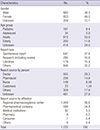
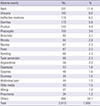
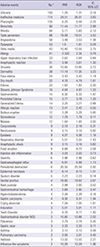
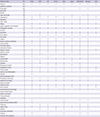




 PDF
PDF ePub
ePub Citation
Citation Print
Print



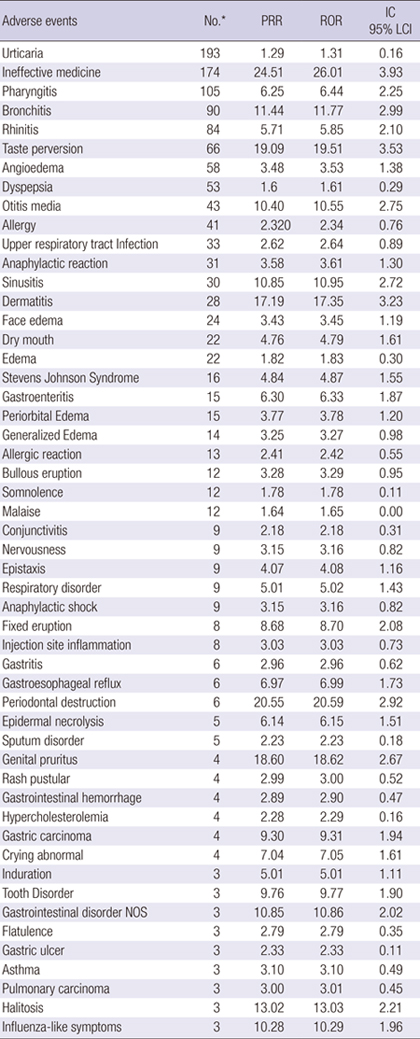
 XML Download
XML Download